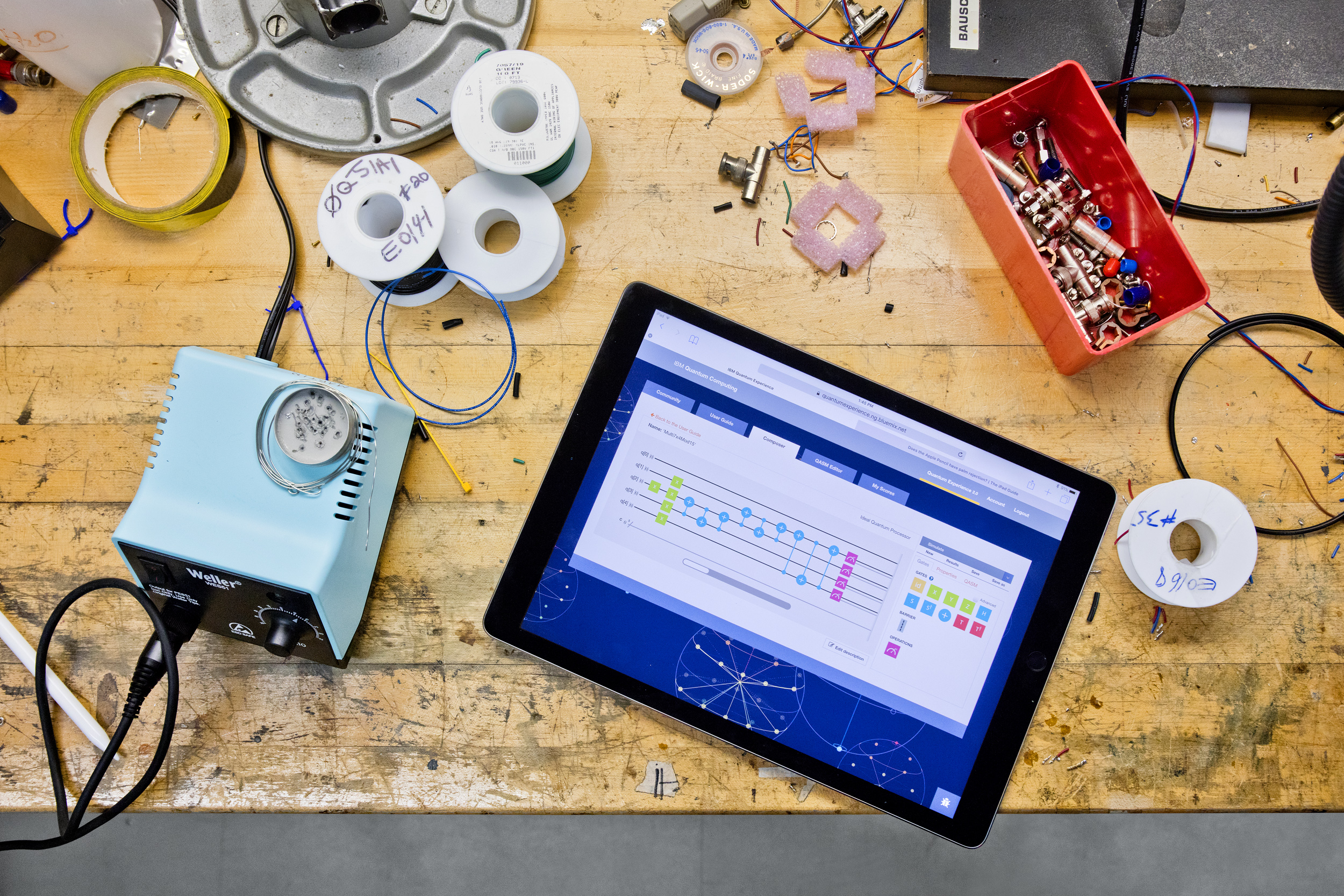
In late 2015, the team leaders, IBM Emeritus and Vice President, Jay Gambetta and Jerry Chow, now Director of Quantum Hardware Development, with the support of the scientific community, proposed to "host" a quantum processor in the cloud. To reach this qualitatively new stage, it took months of joint work of representatives from several continents, aimed at developing the global ecosystem of quantum computing.
For example, cloud software expert Ismael Faro was invited to the working group to develop the platform core and user interface. The group was also joined by third-party designer Carl De Torres, who worked on the look and feel of the app. The working group wanted to focus on a five-qubit device. Mathematical operations called quantum gates linked qubits into quantum circuits. Diagrams showing circuits and gates looked just like musical notes on a stave. Therefore, the team wanted an interface that would allow them to intuitively "compose" such schemes. Over the weekend, Faro, who had no previous experience with quantum devices, put together a prototype of a web page and application - and that turned out to be exactly what the working group wanted.

A mock-up of the IBM Quantum Experience platform concept, created in January 2016 (Photo: Ismael Faro)
However, creating the frontend was only part of the puzzle. The group needed to fully think through the work environment - how users interact with the application, what functions and gates they can see, how users will submit jobs to the backend, how to convert jobs into a quantum assembler understandable by hardware quantum devices, and how to queue thousands of possible jobs for single device.
The hardware had to be prepared as well. Given the timeline, the group decided not to create a completely new device, but to work with the best quantum processor they already had at their disposal.
Quantum computing goes online
Superconducting quantum computers consist of a printed circuit board with superconducting electronics programmed by microwave pulses. These processors are located and connected to the control electronics inside a bucket-sized cryogenic refrigerator. The refrigerator ensures that the qubits retain their superconducting properties and are subject to minimal thermal noise or vibration caused by excess heat. However, any disturbance - even everyday vibrations from a building - can cause the qubits to decohere, that is, "forget" the programmed quantum information.

IBM Quantum Computing Researcher Antonio Corcoles works on a tablet in the IBM Quantum Lab next to an open cryogenic refrigerator
Researcher Antonio Córcoles has been involved in calibrating the devices so that the qubits respond correctly to inputs and hold the setpoint long enough to perform calculations. His team has optimized cryogenic wiring configurations to achieve the best qubit coherence and valve speed.
Once the behavior of the qubits stabilized, the researchers needed to make sure that their performance was reproducible and that the gates were delivering the expected results. In addition, it was required to ensure that the devices were automatically calibrated twice a day. The group had to ensure the device's performance for users and eliminate the resulting glitches, as well as anticipate any problems that might arise for users unfamiliar with the limitations of quantum devices.
The IBM Quantum Experience system (now called IBM Quantum ) went live on May 4, 2016. The trickle quickly turned into a stormy stream: in the first week, 7 thousand users signed up to work with the IBM Quantum Experience, and by the end of the second their number exceeded 17 thousand.

The layout of an IBM device with five superconducting qubits (Credit: IBM)
Perhaps the most important lessons were learned in the first few months after launch. The team analyzed hundreds of user reviews and tracked their own fixes to improve the experience and streamline the process for bringing more quantum devices into production. While employees were using the Slack channel to fix individual bugs on individual requests, work was actively pursued to find more permanent fixes. This was so that the team could return to developing new hardware rather than acting as a technical support service for a growing fleet of processors.
“I think the initial launch was extremely important,” says Korkoles. “But the scale of the work we have done now is amazing. We've brought dozens of devices to the cloud and made them available to developers around the world, often free of charge. ”
IBM has learned how to create stable quantum devices, bring them online, and automate some of the most important experiments, including those related to device calibration. “To be honest, putting a quantum computer in the cloud required a complete overhaul of our thinking,” explains Jay Gambetta, IBM Fellow and Vice President of Quantum Computing. "We see such devices not as objects of laboratory experiments, but as systems."
Facts and figures
The IBM Quantum Experience cloud computing system supports a range of quantum systems that have been made available to researchers, companies and the active Open Source community through the IBM Quantum Composer , IBM Quantum Lab and Qiskit .
Today, more than 325 thousand users are registered on the IBM Quantum platform. Every day, thousands of developers run at least two billion quantum circuits on IBM quantum computers, and now they are helped by the open source software development kit Qiskit.
- Number of registered users:> 325 thousand
- Qiskit downloads:> 650k
- Scientific articles published using IBM Quantum:> 700
- Number of organizations in the commercial IBM Quantum Network:> 140
- Quantum circuits executed:> 2 billion per day
Watch original material in English with additional details, and listen to a podcast featuring the Russian winner of the Quantum Challenge.